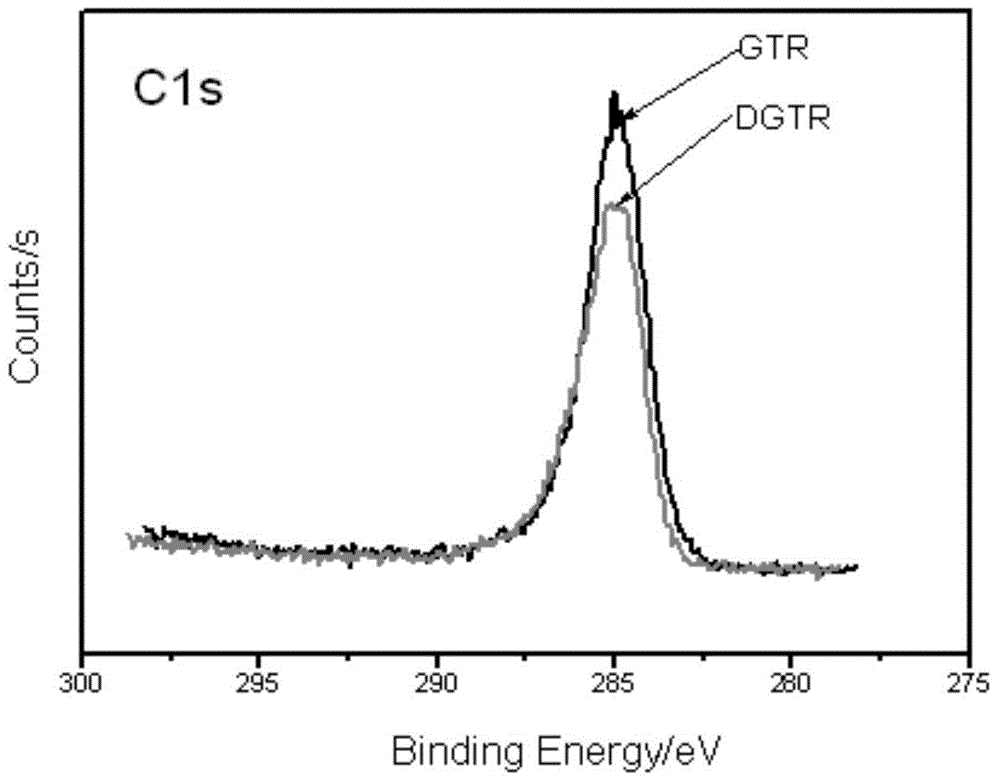Method for desulfurization regeneration of waste rubber by mixing two types of microorganism bacteria
A technology for regenerating waste rubber and microbial bacteria, applied in the direction of microorganism-based methods, biochemical equipment and methods, microorganisms, etc., to achieve simple and controllable desulfurization process, good desulfurization effect, and no secondary pollution
- Summary
- Abstract
- Description
- Claims
- Application Information
AI Technical Summary
Problems solved by technology
Method used
Image
Examples
Embodiment 1
[0023] Strains: Sphingomonas, purchased from Shanghai Fuzhong (Apennines) Biotechnology Development Co., Ltd.; Gordonella, purchased from China Industrial Microbiology Culture Collection Management Center.
[0024] Medium A (the medium used when Sphingomonas is cultured alone): NH 4 Cl 0.4g / L, KH 2 PO 4 4g / L, K 2 HPO 4 ·3H 2 O 4g / L, MgSO 4 ·7H 2 O 0.8g / L, CaCl 2 0.01g / L, Na 2 S 2 o 4 ·5H 2 O10g / L, peptone 1g / L, yeast powder 0.1g / L, glucose 2g / L, and the rest is water; medium B (medium used when Gordonella is cultured alone): NH 4 Cl 2g / L, KH 2 PO 4 2.44g / L,Na 2 HPO 4 ·3H2O5.57g / L, MnCl 2 4H 2 O 0.008g / L, MgCl 2 0.2g / L, ZnCl 2 0.001g / L, CoCl 2 ·6H 2 O0.004g / L, CaCl 2 0.04g / L,AlCl 3 ·6H 2 O 0.001g / L, CuCl 2 2H 2 O,0.001g / L,FeCl 3 ·7H 2 O 0.04g / L, H 3 BO 3 0.001g / L,NaMoO 4 2H 2 O 0.001g / L, glucose 4g / L, and the rest is water.
[0025] Exchange medium culture: prepare 100mL medium A and 100mL medium B in 250mL shake flasks, and sterilize at 115°C f...
Embodiment 2
[0028] Strains: Sphingomonas, purchased from Shanghai Fuzhong (Apennines) Biotechnology Development Co., Ltd.; Gordonella, purchased from China Industrial Microbiology Culture Collection Management Center.
[0029] Rubber: styrene-butadiene rubber vulcanized rubber filled with 30 parts by weight of carbon black, cut into 1cm×1cm film. The specific formula is as follows: styrene-butadiene rubber raw rubber 100 (parts by weight), zinc oxide 4, stearic acid 2, accelerator D 0.6, accelerator DM 1.2, sulfur 1.8, antioxidant RD 1.0, carbon black 30.
[0030] Medium: NH 4 Cl 0.4g / L, KH 2 PO 4 4g / L, K 2 HPO 4 ·3H 2 O 4g / L, MgSO 4·7H 2 O0.8g / L, CaCl 2 0.01g / L, Na 2 S 2 o 4 ·5H 2 O 10g / L, peptone 1g / L, yeast powder 0.1g / L, glucose 2g / L, and the rest is water.
[0031] Co-cultivation desulfurization process: soak styrene-butadiene rubber vulcanizate film in ethanol with a mass percentage concentration of 75% for 24 hours for detoxification; prepare 100mL medium in a 250mL sh...
Embodiment 3
[0034] Strains: Sphingomonas, purchased from Shanghai Fuzhong (Apennines) Biotechnology Development Co., Ltd.; Gordonella, purchased from China Industrial Microbiology Culture Collection Management Center.
[0035] Rubber: styrene-butadiene rubber vulcanized rubber filled with 30 parts by weight of carbon black, cut into 1cm×1cm film. The specific formula is as follows: styrene-butadiene rubber raw rubber 100 (parts by weight), zinc oxide 4, stearic acid 2, accelerator D 0.6, accelerator DM 1.2, sulfur 1.8, antioxidant RD 1.0, carbon black 30.
[0036] Medium: NH 4 Cl 0.4g / L, KH 2 PO 4 4g / L, K 2 HPO 4 ·3H 2 O 4g / L, MgSO 4 ·7H 2 O0.8g / L, CaCl 2 0.01g / L, Na 2 S 2 o 4 ·5H 2 O 10g / L, peptone 1g / L, yeast powder 0.1g / L, glucose 2g / L, and the rest is water.
[0037] Co-cultivation desulfurization process: soak styrene-butadiene rubber vulcanizate film in ethanol with a mass percentage concentration of 75% for 24 hours for detoxification; prepare 100mL medium in a 250mL s...
PUM
| Property | Measurement | Unit |
|---|---|---|
| diameter | aaaaa | aaaaa |
Abstract
Description
Claims
Application Information
 Login to View More
Login to View More - R&D
- Intellectual Property
- Life Sciences
- Materials
- Tech Scout
- Unparalleled Data Quality
- Higher Quality Content
- 60% Fewer Hallucinations
Browse by: Latest US Patents, China's latest patents, Technical Efficacy Thesaurus, Application Domain, Technology Topic, Popular Technical Reports.
© 2025 PatSnap. All rights reserved.Legal|Privacy policy|Modern Slavery Act Transparency Statement|Sitemap|About US| Contact US: help@patsnap.com



